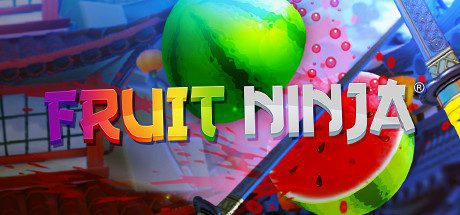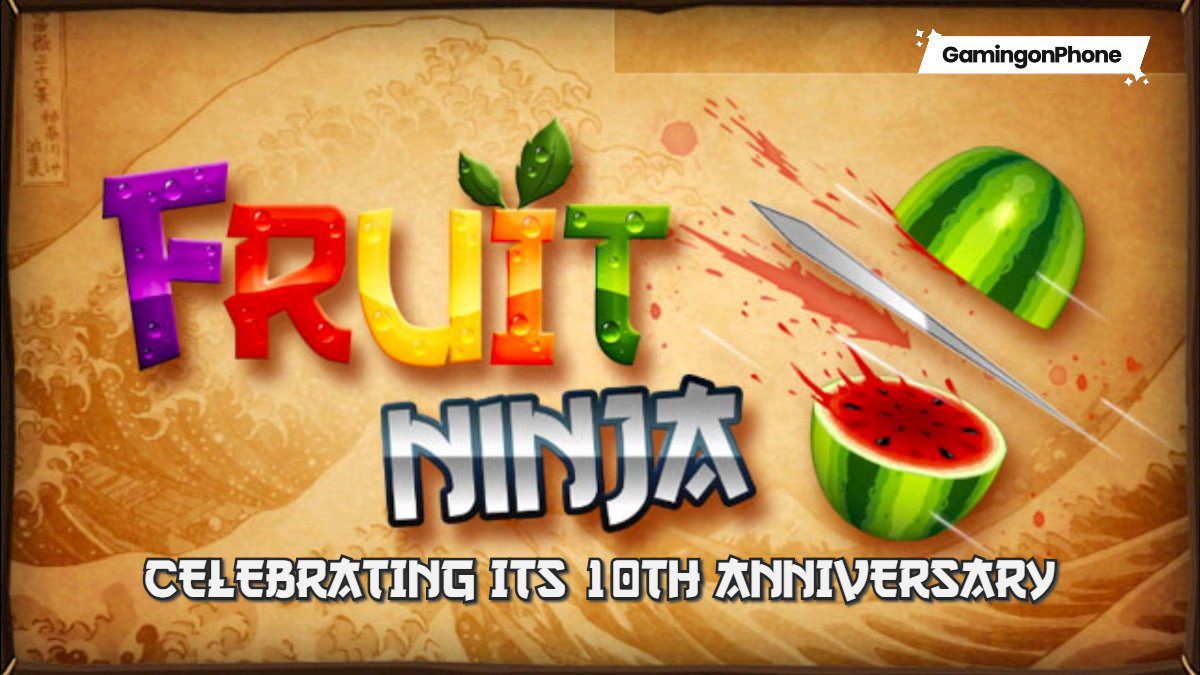While standing on the subway on my way to school, one of my earliest memories of a cellphone is slicing away at the fruit and avoiding bombs. Many of you if old enough, should share the memory. What was once at the pinnacle of mobile gaming Fruit Ninja is now 10 years old. Even though the game may be a memory to us, the team of developers at HalfBrick Studios has been hard at work long after we stopped playing. In this article, we recap the good memories while we celebrate the 10th Anniversary of Fruit Ninja.
So, What’s the big deal?
For the uninitiated, Fruit Ninja released on November 4th, 2009 for iOS and then followed by the December 17th, 2009 release on android. The game quickly became a juggernaut, releasing on Xbox 360, PC, HTC VR, PS VR, Xbox Kinect. It was able to reach 500million downloads in 2013, 1billion downloads in 2015 and who knows how many today.
Simplicisticly Sophisticated
The game may look primitive to you now in 2020 but, this game was perfect for its time. The developers saw the hardware and understood the limitations. Through meticulous research, the developers were able to find the perfect formula for the market at the time. Their research paid off as the game was a global phenomenon.

The game much like Angry Birds has evolved past just being the mobile game and has turned into a franchise. There are Fruit Ninja toys, children’s cartoons, board games, clothing lines, and many more products. This simple videogame has evolved into an entire brand that the people at Halfbrick are able to use. Even something as simple as fruit ninja can spawn an entire franchise if done with enough ingenuity and adroitness.
Effects on the Industry
Fruit Ninja has released 10 years now, even so, a lot of the choices they made back then have helped shape the industry today. Things have changed a lot since the days when users would mostly purchase whole games instead of mostly playing free games with IAP. Mobile gaming technology revamped the entire gaming business model, where initially people would make most profits from the initial sale, games like Fruit Ninja showed developers the merit in, IAP: selling virtual items within the games themselves. CEO Deo said that in 2011 “in-game purchases now account for 60 percent of Halfbrick’s revenue”.

Mobile gaming didn’t just help show the developers new ways to gain revenue from the consumer, it also showed them that the mobile platform is the perfect one for marketing. Normally developers would need to hire a marketing company, or their publisher would have to take the responsibility for marketing and shipping the product into stores. In some instances, your marketing budget could equate to over ever surpass the production budget. “Development is 50 percent,” Deo says, “but if you want to be successful, promotion takes up just as many resources,” Deo says. However, with mobile gaming, the Devs are only required to pay fees to get the games into the app store, and the advertising is mostly done over the internet. This allows are more focused advertising budget that has been extremely successful at promoting dozens of games over the years.
The Studio Behind The Games
Shaniel Deo founded Halfbrick in 2001 in Brisbane, Australia, and started developing games for children these were mostly licensed titles that required characters and contents from TV shows and movies. These games were designed primarily for the video-game console market to get these games to players he had to use methods such as distribution through the PlayStation Network, Xbox Live Arcade, and similar websites.

Once the iPhone was released and the app store allowed casual games to explode onto the mainstream in 2007, it changed Deo’s focus to original titles. Along with creating Fruit Ninja, Halfbrick has a small stable of quite successful games, including the Age of Zombies, Jetpack Joyride, and Fish Out Of Water. “When mobile took off, the market aligned with our strengths,” he says in 2009, Deo was referring to his company’s already 7-year experience making smaller scale children’s games which could set the framework for more casual games.
Halfbrick’s modus operandi at the start had been to release the games onto iPhone first and then once they’ve made enough profit and generated enough hype, release it on other platforms. Over time as the studio got more popular and received more publishing power, they began having simultaneous Android and iOS releases. Over time one such game, Jetpack Joyride was able to see a simultaneous release on Android, BlackBerry OS, Facebook, PlayStation Vita and, Windows.
The 36-year-old(at the time) CEO Shainiel Deo built Australia’s Halfbrick Studios into one of the top casual-game publishers on the strength of Fruit Ninja. Now celebrating the 10th anniversary of Fruit Ninja and 10 years wiser, 46-year-old Shaniel continues to innovate on his company to further profits and create things for people to enjoy.
So what is Fruit Ninja today?
If reading this made you want to go back and relive your glory days, what can you expect when you open Fruit ninja today? Well, the game hasn’t really changed its layout much from what you’re probably envisioning. The base gameplay is still there if you desire it, but they added new gameplay modes. One such mode is Zen mode where they removed the bombs. An Arcade mode with a timer exists to challenge users to get a high score for the leaderboards. There are seasonal events for players to engage in and a level-up system where you can unlock new power-ups and upgrades.

We kept mentioning downloads which would be a strange metric to be so keen to note in 2020. While most games today talk about IAP sales made, Fruit Ninja was initially a paid product. Due to this, each download is actually one sale made! This means one of the biggest changes to Fruit Ninja is that it’s now free to play with in-app purchases. Don’t worry, the purchases are limited to power-ups or skins for your blade.
Fruit Ninja is a great introductory game for children and easy to play for older users. As mobile devices get better touch screens and haptics, games like Fruit Ninja only get better. Deo said,” We wanted it to be very simple … We knew that we had something special when we started showing our friends and family. They wouldn’t want to hand the phones back.”. Who knows maybe a new game from the developers at Halfbrick could be the next big hit. The success was overwhelming that they are even brought a sequel in Fruit Ninja 2. Just because Fruit Ninja seems simple doesn’t mean you should count out these devs. Their ability wasn’t in creating the game. The true talents came from analyzing the market and creating the best possible game within limitations. At that task, this studio is without peer.
What are your opinions on the 10th anniversary of Fruit Ninja? Do let us know your thoughts in the comments!
For more Mobile Gaming news and updates, join our WhatsApp group, Telegram Group, or Discord server. Also, follow us on Google News, Instagram, and Twitter for quick updates.



